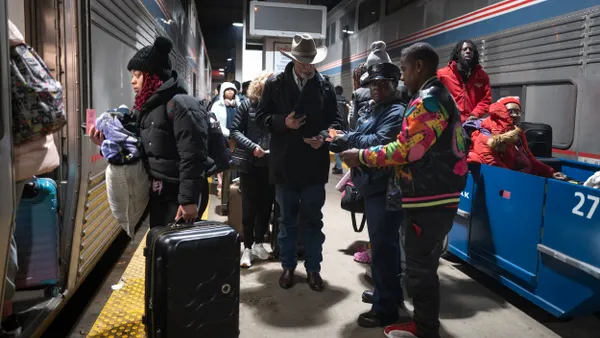Editor's Note: The following is a guest post from Gary Hallgren, president of Arity.
Ride-sharing has changed the way we drive.
We’ve all heard that sentiment in some shape or form over the last few years. Shared mobility companies such as Uber and Lyft have disrupted personal transportation in the way that Netflix transformed cable TV and Airbnb shook up the hotel industry. But there’s more to it than that. Ride-share services have not only changed how we drive, but they have transformed how we think and feel about car ownership itself.
The momentous shift in consumer sentiment, coupled with the explosion of ride-share services, has already altered transportation as we know it — and it won’t stop there. Exciting opportunities are emerging that will impact the entire transportation industry, from traditional manufacturers to insurance providers. Those who aren’t paying attention will be left behind.
The car-cutting phenomenon
For my generation, owning a car symbolized freedom. It offered the possibility of adventure and escape. Now, it’s quite a different story. For a generation that values convenience, affordability and instant access, owning a car has become a burden. The idea of car ownership brings to mind loan payments, parking meters and gridlock. The adage "you are what you own" no longer applies.
Our evolving relationship with cars has been largely driven by ride-share companies, and this has given them a significant influence on drivers, cities and the industry as a whole. A recent report from Lyft claimed that the company provided 375.5 million rides in 2017, and that 250,000 passengers got rid of their cars that year specifically because of ride-share services.
It’s clear that vehicle ownership is no longer necessary or even desirable for many. The larger transportation ecosystem has noticed and is responding by expanding their business models to incorporate the ride-sharing mindset. Even manufacturing giants are starting to rethink how their vehicles fit into drivers’ lives.
From car manufacturer to 'mobility provider'
In response to the impact of ride-sharing services and the changing view of car ownership, major car manufacturers are starting to test various car-sharing and subscription services. General Motors launched a pilot program to allow car owners to rent out their vehicles through a digital platform. Owners will be able to use Maven, the company’s peer-to-peer car-sharing platform, to list their cars when they aren’t using them, and the profits will be shared with the company.
Meanwhile, BMW and Mercedes-Benz are both exploring subscription car ownership models that bundle all fees — including payments, maintenance and insurance — and allow customers to upgrade to a new car more quickly. This model is increasingly sought by consumers who don’t want to make multiple payments or be tied down to the same car for years. Additionally, Volvo launched a subscription service that gives customers the ability to get a new car after just 12 months.
These new offerings show how seriously manufacturers are taking the ride-share emergence. They are partnering with ride-share and car subscription tech companies who were once seen as rivals in order to form new solutions and improve transportation — now that’s disruption!
As major manufacturers reshape their role in the transportation ecosystem, the market continues to move away from owning or leasing a car in favor of more affordable, flexible and convenient subscription car services.
From insurance policy to ‘pay-as-you-drive’
The same demand for flexibility and convenience that has shaken up car ownership is also impacting the traditional insurance model. The result is usage-based insurance (UBI). This pay-as-you-drive model focuses on the idea that drivers' insurance rates should be based on their actual driving behavior rather than demographics data or credit score. UBI uses real-world data and telematics to assess a driver’s risk and determine what their insurance rates should be.
This is truly the future of insurance, one in which data is collected in real-time and is used not only to create more accurate insurance pricing, but also to make the roads safer. By analyzing factors like road characteristics, accident history, live traffic and weather, telematics can empower drivers with the knowledge they need to make safe decisions on the road.
The new transportation paradigm requires data and analytics
Shared mobility companies have a lot to gain from the changes in consumer demand that have brought on the car-cutting phenomenon, but they’re not the only ones. This shift creates an important opportunity for the entire transportation industry. Ride-sharing, subscription car services and UBI are all part of a not-too-distant transportation future that is smarter, safer and more useful for everyone.
In order to achieve this ideal, we need to harness analytics and telematics technologies. Having the right data is the answer here. These solutions can deliver the safe, convenient and flexible transportation system that consumers demand, but they will rely on precise data to reach their full potential.
We must harness data from the entire spectrum — from drivers, from insurance companies and from shared mobility solutions — and apply machine learning to come up with the insights that can truly change transportation. The industry must work together to develop a collaborative, open-source data set that will enable improved mobility solutions and ultimately usher in the future of transportation.









